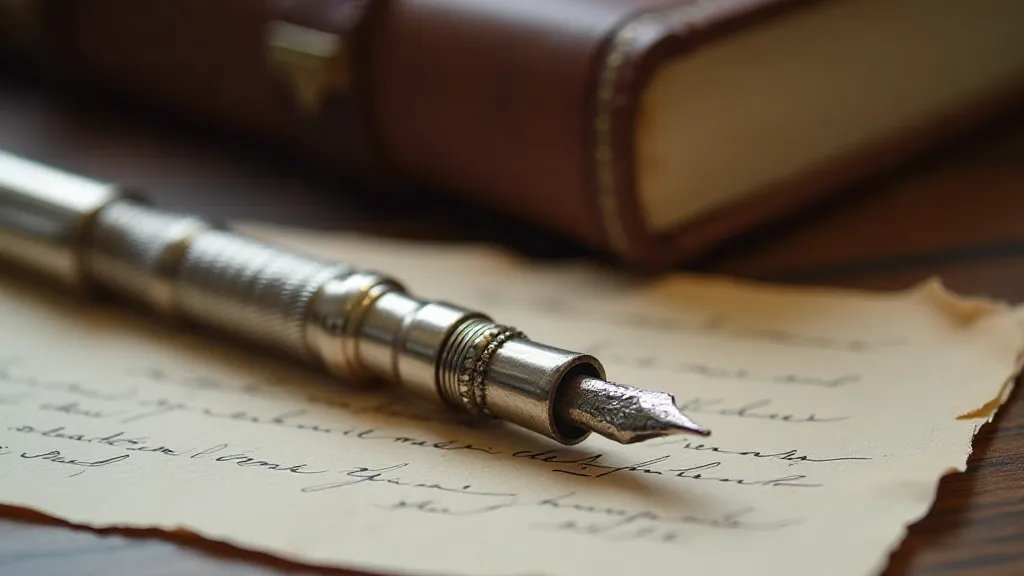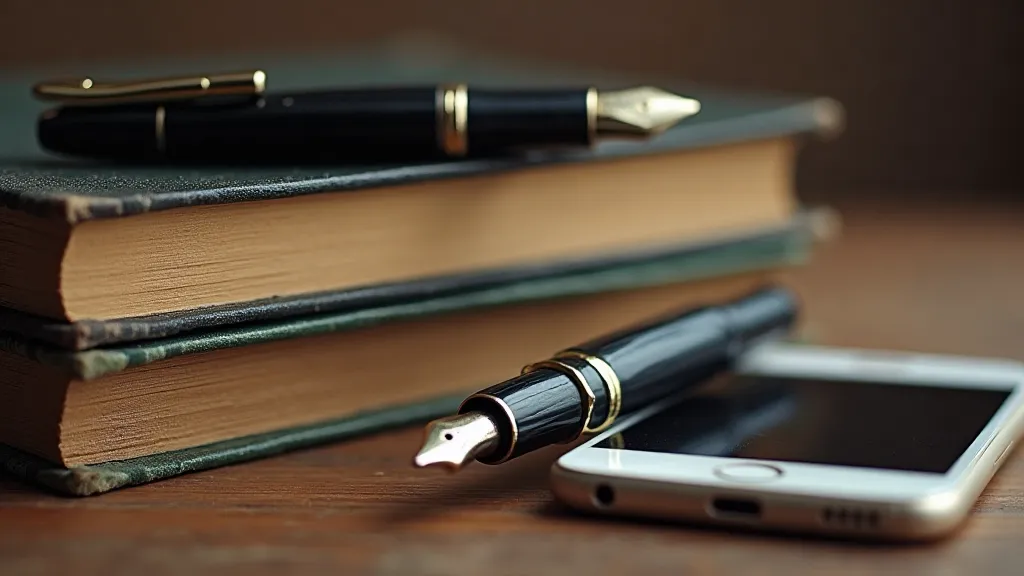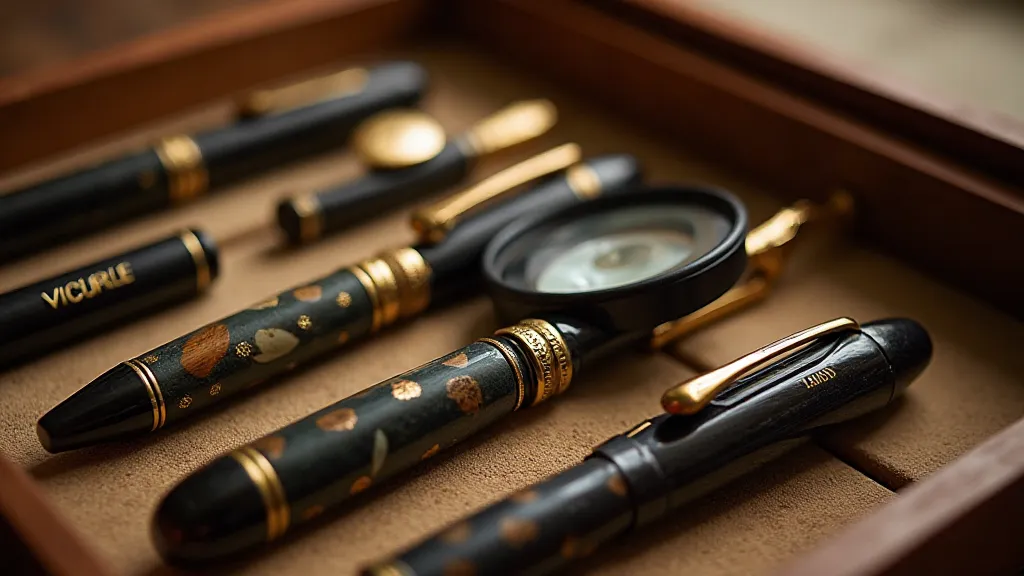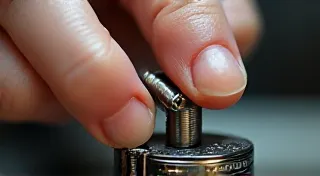Beyond the Gold Leaf: Deconstructing the Mythology of Luxury Pens
There’s a certain magic that clings to antique pens. It’s not just the beauty of the materials – the rich browns of ebonite, the gleam of gold, the intricate carvings – but something deeper. A sense of history, of connection to the hands that crafted them and the minds that wielded them. We often associate these pens with luxury, with status, with a bygone era of elegance. But how did these writing instruments, once tools of correspondence and record-keeping, ascend to the realm of collectible artifacts and symbols of affluence?
The Dawn of a Craft: Beyond Functionality
The story begins long before the grand names we recognize today. Early quill pens, painstakingly carved from feathers, were functional necessities. Then came the emergence of mass-produced steel dip pens, democratizing writing for a broader population. But even these practical instruments yearned for refinement. The late 18th and early 19th centuries saw the birth of the fountain pen, initially a clumsy, often leaky, experiment. Early patents were granted to innovators striving for a reliable system of ink delivery – a crucial step beyond the messy quill.
It wasn’t just about improving functionality. As technology advanced, the pen began to evolve into an object of artistry. Silversmiths, jewelers, and even watchmakers—masters of their respective crafts—began lending their skills to pen design. The addition of precious metals, elaborate ornamentation, and personalized engravings signaled a shift. A pen wasn't just about writing; it was about making a statement. Imagine a lawyer in the 1880s, signing a momentous contract with a pen crafted from sterling silver, the weight and feel of it conveying a sense of authority and permanence.

The Rise of Pen Brands: Cultivating a Legacy
The mid-19th century witnessed the emergence of brands that would become synonymous with quality and prestige. Names like Waterman, Parker, Sheaffer, and Montblanc began to establish themselves. Initially, these companies focused on perfecting the technology of the fountain pen, but they soon understood the power of branding. They weren’t just selling pens; they were selling an image – a promise of sophistication, reliability, and success. Waterman, for example, actively promoted the reliability of their pens, emphasizing their resistance to leakage, a significant selling point in those early days. Parker, with its focus on innovative filling mechanisms, positioned itself as a leader in technological advancement.
The marketing campaigns of these early pen manufacturers tapped into a growing desire for refinement in a rapidly industrializing world. The rise of the middle class created a new market of consumers eager to acquire symbols of status. Owning a prestigious pen became a way to signal accomplishment, to distinguish oneself from the masses. These pens were often purchased as gifts – graduations, promotions, retirements – marking significant life events with a tangible representation of achievement. The very act of writing began to change, influenced by the tools themselves. Some speculate that the flow and rhythm of the writer's hand, and consequently, their thoughts, were subtly shaped by the pen’s weight and feel – a fascinating consideration explored further in articles examining how pens shape the writer’s intimacy with words.
The Post-War Era and the Height of Luxury
The post-World War II era solidified the association of pens with luxury. Air travel became more common, and the advent of fountain pens as travel companions reinforced their image as symbols of refinement and international sophistication. Montblanc, in particular, capitalized on this trend. Their pens, initially popular with affluent travelers, became aspirational objects. The introduction of limited editions and numbered pens further heightened their exclusivity and collectibility.
The rise of the advertising industry played a crucial role. Clever campaigns linked pen ownership with success, creativity, and even romance. Pens appeared in movies and literature, further embedding their image as symbols of aspiration. It became less about the act of writing and more about the possession of a beautiful, prestigious object. The tactile experience – the weight in the hand, the smooth glide across the paper – became intertwined with a sense of privilege and accomplishment.
I remember my grandfather, a quiet, unassuming man, always carried a Parker 51. It wasn't about the pen itself; it was about what it represented—a certain dignity, a respect for tradition, a connection to a different time. He rarely spoke about it, but the pen was always there, a silent testament to his values.
The Digital Age and the Enduring Appeal

The advent of digital technology posed a challenge to the traditional pen. Why bother with a fountain pen when you can type on a computer or tablet? Yet, the allure of the antique pen has persisted, and arguably, even intensified. This is because the digital age has stripped away much of the ceremony and personal touch from communication. Writing with a fountain pen becomes an act of rebellion against the impersonal nature of the digital world.
There’s a resurgence of interest in handwriting, in craftsmanship, in tangible objects that offer a sensory experience. Antique pens, with their history and character, offer something that a ballpoint pen or a digital stylus simply cannot replicate. The subtle variations in ink flow, the slight imperfections in the material – these are not flaws; they are hallmarks of authenticity. They tell a story of the pen's journey through time. Considering the evolution of pen designs throughout history reveals a fascinating glimpse into past eras, an exploration echoed in mapping pen designs through time.
Restoration and Collecting: More Than Just Ownership
The restoration of antique pens is an art in itself. It requires patience, skill, and a deep appreciation for the original craftsmanship. Replacing a cracked lever cap, carefully cleaning a clogged nib, or gently polishing a tarnished barrel – these are acts of preservation, ensuring that these beautiful objects can continue to be enjoyed for generations to come. It's a connection to the past, a tangible way to honor the skill of the original maker.
Collecting antique pens is more than just accumulating objects; it’s about researching their history, understanding their significance, and appreciating the stories they represent. Each pen tells a story of a specific era, a particular maker, and perhaps, even the hand that once held it. The thrill of the hunt, the joy of discovery, the satisfaction of preserving a piece of history – these are the rewards of a dedicated collector. The way pens have influenced writing styles and the nuances they’ve imparted upon the written word can also be appreciated further through an analysis of how early pen design echoes lost writing styles.

The mythology of luxury pens isn’t simply about gold leaf and precious stones. It’s about a confluence of technological innovation, masterful craftsmanship, astute branding, and a societal desire for refinement. These pens became more than just tools for writing; they became symbols of aspiration, of achievement, of a bygone era of elegance. And even in our digital age, their enduring appeal speaks to our longing for tangible connection, for beauty, and for a touch of history in our lives.





